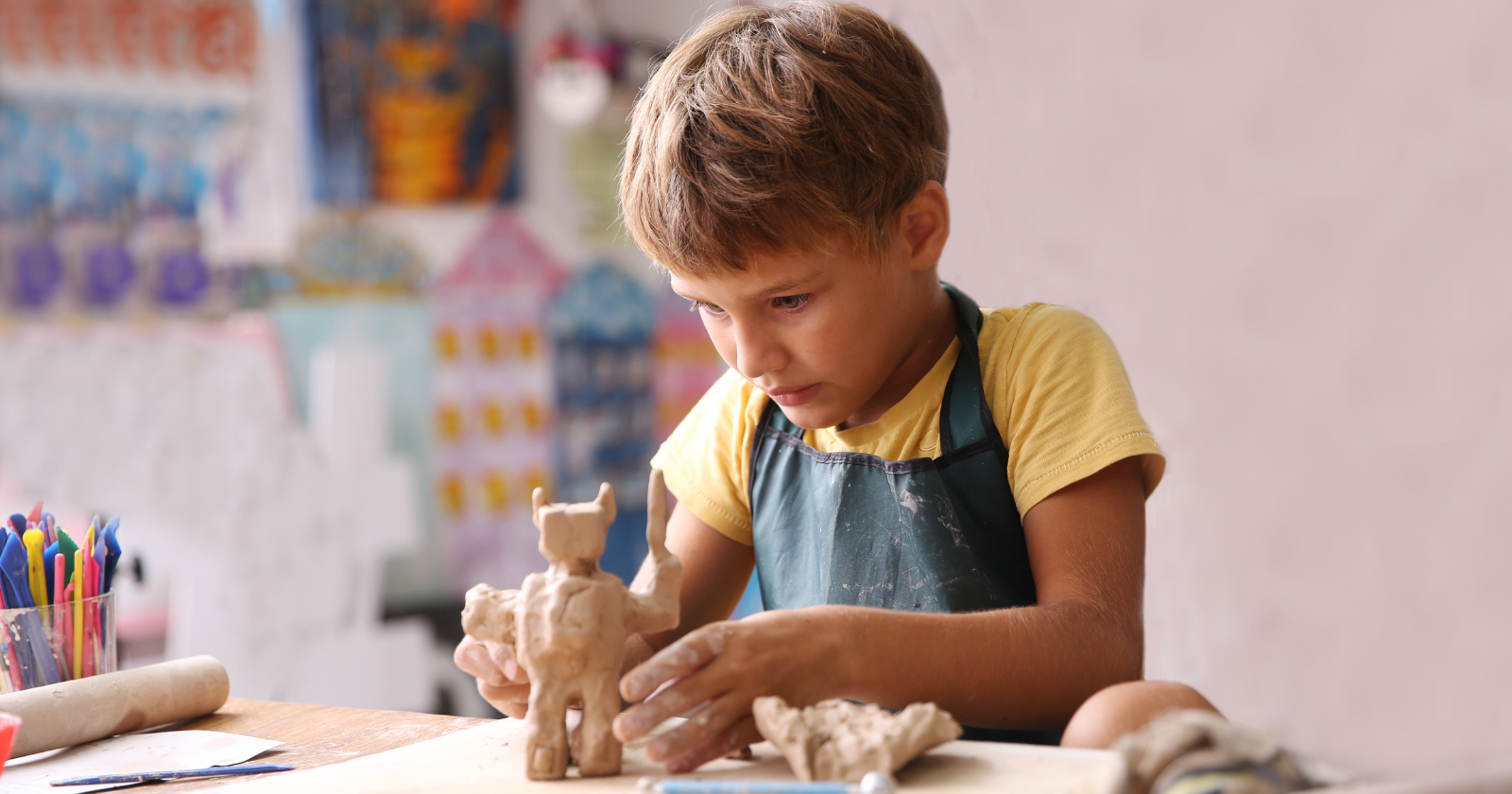As parents, we notice the little things. How our children hold a pencil. The way they tell stories. The colors they choose when they draw.
Sometimes, those small moments reveal something bigger: a natural pull toward creativity.
I learned this firsthand when my youngest son, at five, drew a lopsided picture of our dog. The proportions were off, but the expression was perfect. He had captured our dog’s mischievous look with just a few bold strokes.
That was when I realized artistic talent does not always show up in straight lines. It shows up in how a child sees.
Here are eight signs your child might have that special spark for art, and how you can nurture it along the way.
1. They notice details most people overlook
Does your child point out the way light changes on a wall or how someone’s shirt matches the sky? Those small observations are often the first hints of an artist’s mind at work.
Kids with a natural eye for art tend to be extra observant. They do not just see things, they study them.
They might notice how shadows stretch at different times of day or how water ripples differently in the sink compared to a pond.
Psychologists say this level of attention helps strengthen visual and emotional intelligence, two key ingredients in creative development.
As Michael Yogman, MD, once said, “Play with parents and peers is fundamentally important for developing a suite of 21st century skills, including social, emotional, language and cognitive skills, all needed by the next generation in an economically competitive world that requires collaboration and innovation. The benefits of play cannot really be overstated…”.
When you see your child quietly studying the world, they are not zoning out. They are tuning in.
2. They express feelings through pictures before words
Some children reach for crayons when words feel too small for what they feel.
If your child tends to draw when they are upset, happy, or deep in thought, that might be their way of processing emotions.
I remember one rainy afternoon when my middle son drew a storm cloud with a small sun peeking through. He did not say much, but I understood exactly how he felt, torn between frustration and hope.
Research in child psychology has found that artistic expression can help kids develop self-regulation and emotional awareness.
Art becomes their way of speaking when words fall short.
3. Their imagination feels boundless
Einstein once said, “Imagination is more important than knowledge. For knowledge is limited to all we now know and understand, while imagination embraces the entire world, and all there ever will be to know and understand.”
- If you need to move while thinking you’re using your brain in these 7 advanced ways - Global English Editing
- 9 behaviors people adopt in their 40s and 50s that lead to deep regret in their 70s - Global English Editing
- 8 psychological reasons people can’t stop discussing you when you’re not there - Global English Editing
Children with creative minds often live in vivid worlds of their own making. They invent stories about their drawings, give personalities to everyday objects, and see possibilities where others see limits.
When I was little, I used to build cardboard houses for imaginary neighbors. Now, I smile when I see kids doing the same. Imagination opens doors to new ways of seeing the world.
Encourage it. Let them mix paints in wild colors, build something unusual, or draw creatures that do not exist. That is where innovation begins.
4. They lose track of time when they are creating
Have you noticed how your child seems to disappear into their art? Maybe you call them for dinner and they do not even hear you.
That kind of focus, what psychologists call “flow,” is a strong sign of intrinsic motivation.
Children who love art for its own sake often enter that focused zone naturally. They are not drawing to impress anyone. They are doing it because it feels good.
I used to worry when my youngest spent hours doodling instead of playing outside. Over time, I realized that was his playground, his way of exploring.
The best thing you can do is respect that space. Creativity thrives in freedom, not in schedules.
5. They find beauty in ordinary things
Artists often see beauty where others do not. If your child collects pebbles for their colors, stares at the way soap bubbles reflect the light, or insists on saving scraps of paper “for a project,” that is a creative eye at work.
True creativity starts with perception, not technique. Children who spot patterns, symmetry, or contrast are already thinking like artists.
Once, my eldest pointed out how the cracks on our driveway looked like a map of rivers. I laughed at first, then realized he was right.
Children with artistic tendencies help us see the poetry in everyday things.
6. They enjoy experimenting more than following instructions
Some children love paint-by-number sets. Others lose interest halfway through because they want to try their own ideas.
If your child tends to experiment, mix media, or “break the rules” in creative ways, that is actually a promising sign.
Creativity often blossoms when kids feel free to explore without judgment.
Rudá Iandê, in his book Laughing in the Face of Chaos, wrote, “We are all wanderers in a strange and inscrutable world, fumbling our way through the darkness with only the faintest glimmer of light to guide us.”
His insight resonated deeply with me. It reminded me that children’s creative curiosity is their way of navigating that darkness, a world full of unknowns, by turning it into something beautiful.
Let them get messy. Let them try and fail. Every mistake is part of their artistic map.
7. They are deeply sensitive to mood and emotion
Artistic children tend to absorb the feelings around them. They might sense tension in a room or mirror your emotions without words.
This sensitivity can feel overwhelming sometimes, but it is also what allows them to create with depth and empathy.
You might notice them drawing people with expressive faces or colors that match moods: blue for calm, red for energy, gray for sadness. Those choices are not random. They are emotional interpretations.
When you talk with your child about what their art means, you teach them emotional literacy. You help them connect their inner world to the outer one, something many adults still struggle to do.
8. They ask curious questions about how things are made
Artists are natural observers and inventors. If your child is constantly asking, “How do they make that?” or “What happens if I mix this with that?”, they are thinking like a creator.
When my sons were younger, they went through a phase of dismantling old electronics. At first, I was frustrated. But looking back, that curiosity was not destruction. It was discovery.
Children with creative leanings often want to understand form, function, and transformation. They do not just see an object; they see its potential.
Experts in child development note that encouraging this curiosity builds the foundation for problem-solving and innovation later in life.
The trick is to offer materials that let them explore safely, such as clay, recyclables, or simple household items.
Final thoughts
Artistic talent does not always show up in perfect proportions or polished projects.
Sometimes, it appears quietly, in a child’s curiosity, in their messy experiments, or in the way they find beauty in the unnoticed.
As parents, our role is not to label or push, but to notice and nurture. Give them space, materials, and encouragement to explore freely.
Every child has creativity within them, but for some, it is their language, the way they make sense of life.
When we honor that, we give them permission to grow into themselves.
And maybe that is the real art of parenting: learning to see the world again through our children’s eyes, one color, one question, one sketch at a time.



